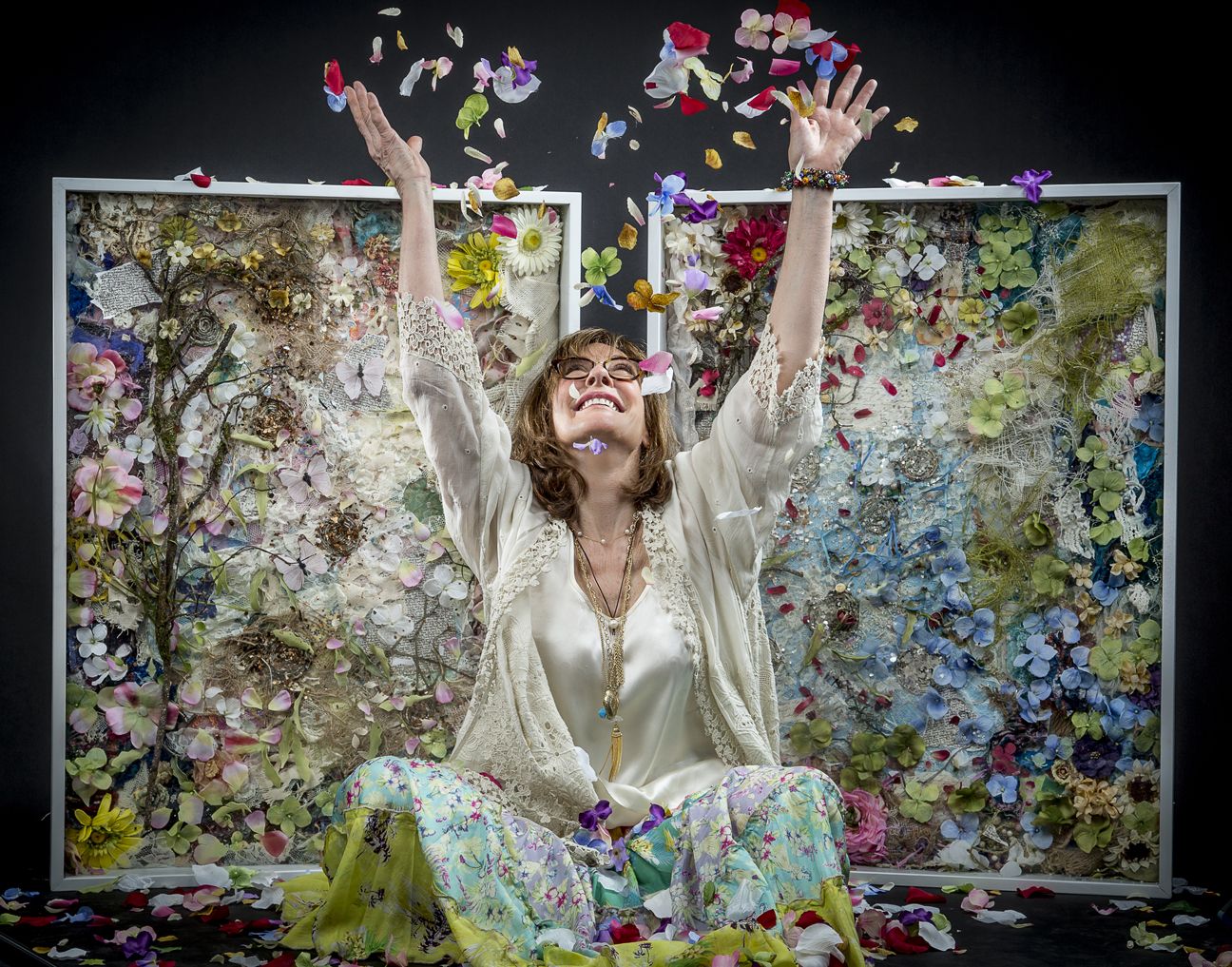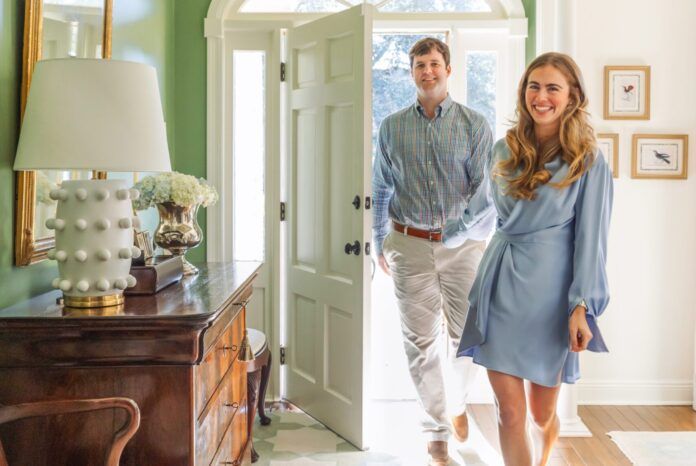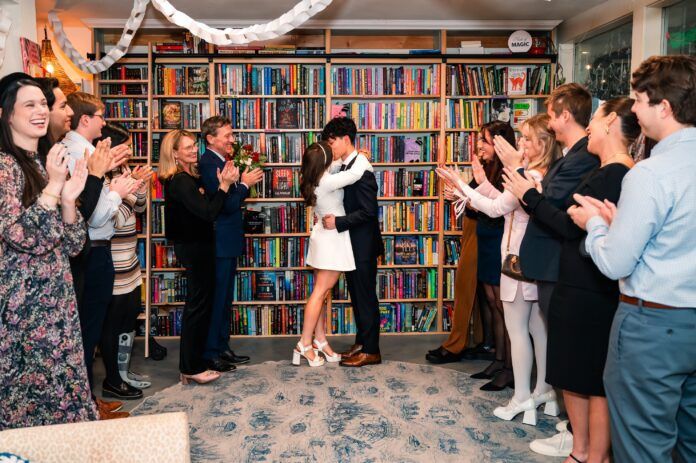Something’s stirring with chef-turned-artist Pam Westbrook
The ingredients for chef-turned-artist Pam Westbrook’s masterpieces are creativity, reinvention and original expression
Pam Westbrook has made a name for herself as an artist, entering shows to display her larger-than-life collages and hosting classes from the studio adjacent to her Capital Heights area home. She and her students—mostly adults—explore texture and color, chat about past experiences and even sit down for a homemade meal before the evening ends. But ask Westbrook what she does for a living, and her answer will probably alter any preconceived notion of her life’s work.
“I am not an art teacher,” she says. “I facilitate creativity.”
Those art class dinners, after all, have their roots in Westbrook’s first passion, the one that saw her hovering over a simmering pot instead of a stretched canvas. Behind the paint-splattered aprons, vats of dye and blowtorches, Westbrook is a classically trained chef—one of the first to take advantage of the burgeoning cooking school scene in New Orleans.
“I wanted to be a food critic at first,” she says. “I thought it would be best to learn about the food so that I could write about it better. But I just got so involved with the cooking that I kept heading in that direction.”
After apprenticing under a French chef in New Orleans—one of the only classical French kitchens to offer classes at the time, according to Westbrook—she took her teacher’s advice and traveled to Paris to train there for a year. She returned to work in restaurants in Louisiana and even trained her friend Susan Spicer, now the owner of several restaurants including Bayona in New Orleans. After Westbrook’s children went off to college, though, she decided to focus her energy in a different direction, and she went back to school to study pottery at LSU.
“I did that for about 16 years,” she says. “Then I developed arthritis in my hands and couldn’t be as dexterous with ceramics anymore, so I went into collage, which is what I teach.”
In addition to the workshops she now holds with adults in her backyard studio, Westbrook’s philanthropy extends beyond four walls. She has also worked as an art therapist with children and teenagers who lost a parent or sibling.
“We did collages to help work through their present and to project a possible future,” she says. “We layered materials that reminded them of the old days, and then we did the same thing again, but with things that helped create an image of a better future.”
Westbrook says it didn’t matter if the children had any natural artistic or visual sensibilities. The payoff, she says, was evident in the catharsis that comes from making art.
“I’ve done shows of student work twice,” she says. “They’ve been the best shows I’ve ever done. They’re just beautiful when you draw from experience.”
But Westbrook’s journey into the world of collage also comes from a personal place. When she cleaned out her father’s house after his passing, Westbrook discovered several pieces of memorabilia—cloth cuttings, letters and coins from European adventures, to name a few—that told a unique story. These pieces became inspiration for her work.
 “It’s like seeing yourself through art,” she says of her medium.
“It’s like seeing yourself through art,” she says of her medium.
Since leaving the food world behind, Westbrook has taught art classes at the Shaw Center, BREC and The Red Shoes, but she says she can’t help preferring the intimate space of her home studio.
“Those are some of the best classes I have ever done,” she says, referring to the evenings when she sits down to eat homemade dinner with students as a sort of lesson intermission. “Breaking bread together in the middle of the classes is such a good thing, because it’s so personal.”
That’s why Westbrook calls the collages produced during these dinner classes “personal landscapes.” Devoid of trees or flowing rivers depicted in more traditional landscape paintings, the students’ abstract creations more closely represent the stages—not the places—that they’ve passed through in life.
“Art to me is not looking at a horse and drawing a horse,” Westbrook says. “To me it’s something that comes from your heart with your own interpretation. It comes out as you.”
Perhaps due to her history with bereavement art therapy, Westbrook understands that even a negative experience can be transformed into something beautiful on a canvas.
“Art is healing and it gives you so much,” she says. “It allows you to look at life from all kinds of different perspectives. When a student creates something joyful or beautiful, I just try to stress that that is who they are. Something beautiful.”












